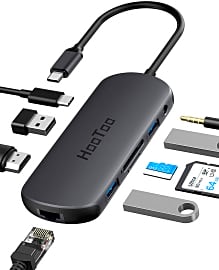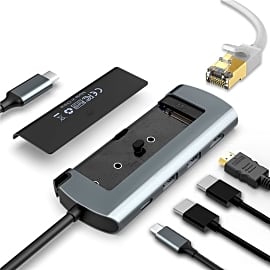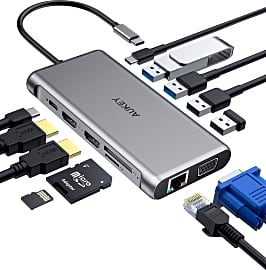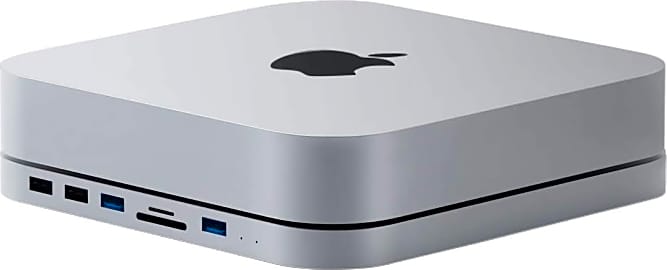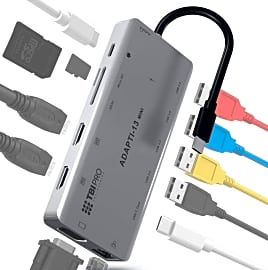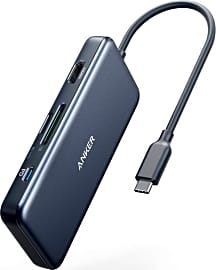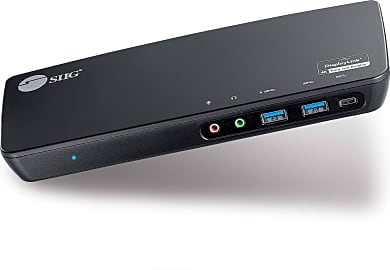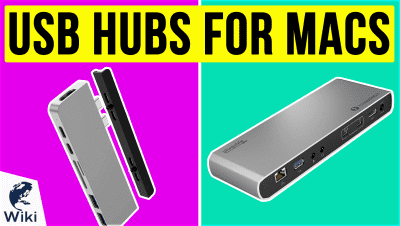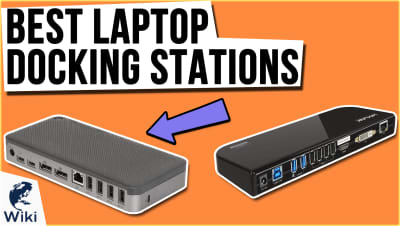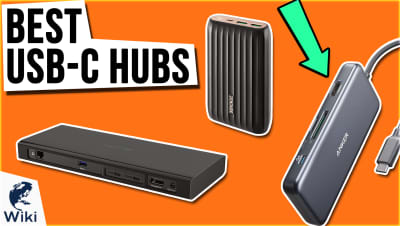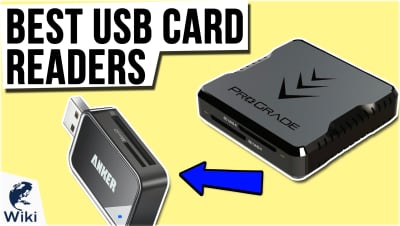The 10 Best USB Hubs

This wiki has been updated 41 times since it was first published in March of 2015. With the plethora of mobile devices and accessories needed by home and business computer users these days, most people find they need additional USB ports to accommodate everything without constantly plugging and unplugging. Our selection of hubs includes models that offer 3.0 speeds and backwards compatibility with previous USB versions, plus some USB-C options to connect with the newest gear. When users buy our independently chosen editorial choices, we may earn commissions to help fund the Wiki.
Editor's Notes
January 12, 2021:
Our goal in this update was to remove any models that felt a little dated and replace them with reliable additions that offer the most modern connectivity ports. We also wanted to introduce some versatility into the category, as evidenced by the ZEXMTE 6-in-1 and Hagibis MC25-SL, both of which double as SATA enclosures, so you an expand both your storage and connectivity options at the same time. The Siig JU-DK0B11, though expensive, is one of the best options for somebody who has a multi-monitor setup and requires a 4K resolution and high refresh rate in most of their screens. When it comes to the sheer amount of ports, the Aukey CB-C78 and TBI Pro C13 immediately stand out, however they can be overkill for many users. If you don't require two HDMI slots and a VGA port, you can save a little money and opt for the Vava UC006 or HooToo 9 in 1 instead, both of which we feel will meet the needs of the average user.
December 13, 2019:
There are more than a few types of USB hubs and laptop docks out there. The Vava UC010 and HooToo UC001 are excellent examples of the most portable and possibly the most versatile style, and they're both ideal for any modern notebook that's strapped for ports. The Purgo TC401 is even more capable, able to leverage the powerful Thunderbolt 3 protocol, but it pretty much will only work with MacBooks from the last few years. The Anker PowerExpand+ is a good choice for users of all platforms -- supposedly, even including Linux -- and it's also small and especially durable. The TBI Pro C12, meanwhile, is definitely not small, but it does have more available connectors than pretty much anything else out there.
Speaking of number of ports, the Anker 10-in-1 is suitable for communicating with an army of peripherals at once while charging up to three additional devices at up to 2.1 amps. All it has is Type-A ports, though, so it's not quite as versatile as the rest. For extreme versatility, we'd highly recommend checking out the Siig JU Series, as one of these impressive, externally powered docks is almost certain to provide you with the connectivity you need. And while we're in the externally powered department, the Glyph Dock is an incredibly interesting option that can take advantage of today's high-speed flash memory while also offering functional expansion ports. If you're going for simplicity and ease of transport, the Anker 4-Port can come to rescue when all you need is a few more open Type-A bays, and the Belkin Dock Mini is a shrunken version of the popular manufacturer's highly capable docking stations.
How Does a USB Hub Work?
You might use a USB-based wireless keyboard or plug your phone, tablet, or MP3 player into a USB port to charge or transfer files.
If you don't live under a rock, then you are likely familiar with USB ports and their basic functions. In fact, if you are on this page, you are clearly using some type of technological device such as a computer or smartphone and have discovered a need for additional USB ports.
While current computers are often equipped with multiple USB ports, sometimes as many as six or eight, it's still often necessary to have more. After all, we tend to use a large number of USB-based devices to cut back on the inconvenience of cords and to make our work stations more mobile.
It's highly likely that whatever mouse you are using right now requires a USB connection. You might use a USB-based wireless keyboard or plug your phone, tablet, or MP3 player into a USB port to charge or transfer files. And what about printers, game controllers, and external hard drives?
Regardless of the particular devices, you likely need to utilize more than one USB port at once. That's where the USB hub comes in.
The USB hub operates similarly to a surge protector. You get to plug multiple devices into it at once without affecting your computer's overall performance, while multitasking, and still managing to go about your day. This is especially helpful if you have a netbook with a limited number of USB ports.
The right USB hub will seemlessly manage all of these devices while freeing up space on your desk and helping you to stay on task or enjoy your media. If you have one of those thin netbooks for convenience and enjoy traveling or working remotely, but you need to multitask, you need a USB port.
The type of work you do will help to determine the type of USB port that you need. As with any product, you should consider your individual needs and carefully peruse the available options before making a final decision.
Advantages of USB Hubs
In case you're still not sold on buying a USB hub to make your office space or gaming experience run more smoothly, take a look at some of these advantages to purchasing the right one for you.
First, USB hubs use their own power. That is if you purchase a powered hub. Some hubs are unpowered and operate off of your computer's USB power. These split the power and drain your computer's battery much faster than a powered USB hub that runs on AC power. Powered USB hubs will allow your computer to run at full power and are completely worth the extra cord.
PC's are often used to perform a number of office functions.
Second, they are better equipped than your computer to handle the large components such as gaming controllers, external hard drives, scanners and printers. This prevents these items from draining your computer's power so you can keep working or playing without missing a beat. You can run all of these items at one time. You can charge your cell phone or tablet while running your printer and transferring files to your external hard drive.
Third, they are a top choice for both PC and Macintosh users. PC's are often used to perform a number of office functions. In an office setting, many large components are necessary to keep things running smoothly. A powered USB hub enables office computer to handle a number of tasks at one time. Apple iMac computers are increasing in popularity, especially among graphic designers and gamers. Powered USB hubs help these people get through work and play with no interference.
Finally, there are many powered USB hub options to choose from. Depending on your needs, you can buy a USB hub that connects four devices or as many as fifteen. Some are created for long-lasting, industrial use. Others are more attractive and can be placed on a desktop. You can even purchase some that stand upright for more space-saving convenience.
A Brief History of the USB Hub
Computers were originally designed with a wide range of different port types. The ways in which people could connect additional devices were severely limited and made it difficult for the average user to understand whether or not he was purchasing the right device for his computer.
Now, printers, scanners, smartphones, tablets, game controllers, and other external devices can all be connected to a PC or Macintosh using USB.
USB stands for "Universal Serial Bus" and was designed as an easier, more universal way to connect external devices and transfer important data. USB 1.0 was introduced in 1995. It greatly simplified and sped up data transfers between devices.
Apple developed the iMac G3 in 1998 making it the first computer designed for the average consumer to do away with the legacy ports and convert to USB. By the turn of the millenium, USB was taking over and nearly eliminating the need for other ports altogether.
USB flash drives began to replace floppy disks for file storage and transfers. External devices began to be designed with USB connections for a more user-friendly experience. Now, printers, scanners, smartphones, tablets, game controllers, and other external devices can all be connected to a PC or Macintosh using USB.
This transition prompted the need for USB hubs with multiple connectivity ports that would run all necessary devices at one time without slowing down the computer. The patent for the original USB hub was filed by Yea Huang in 2002. Since then, the device has grown in popularity, and demand for it has only increased.


